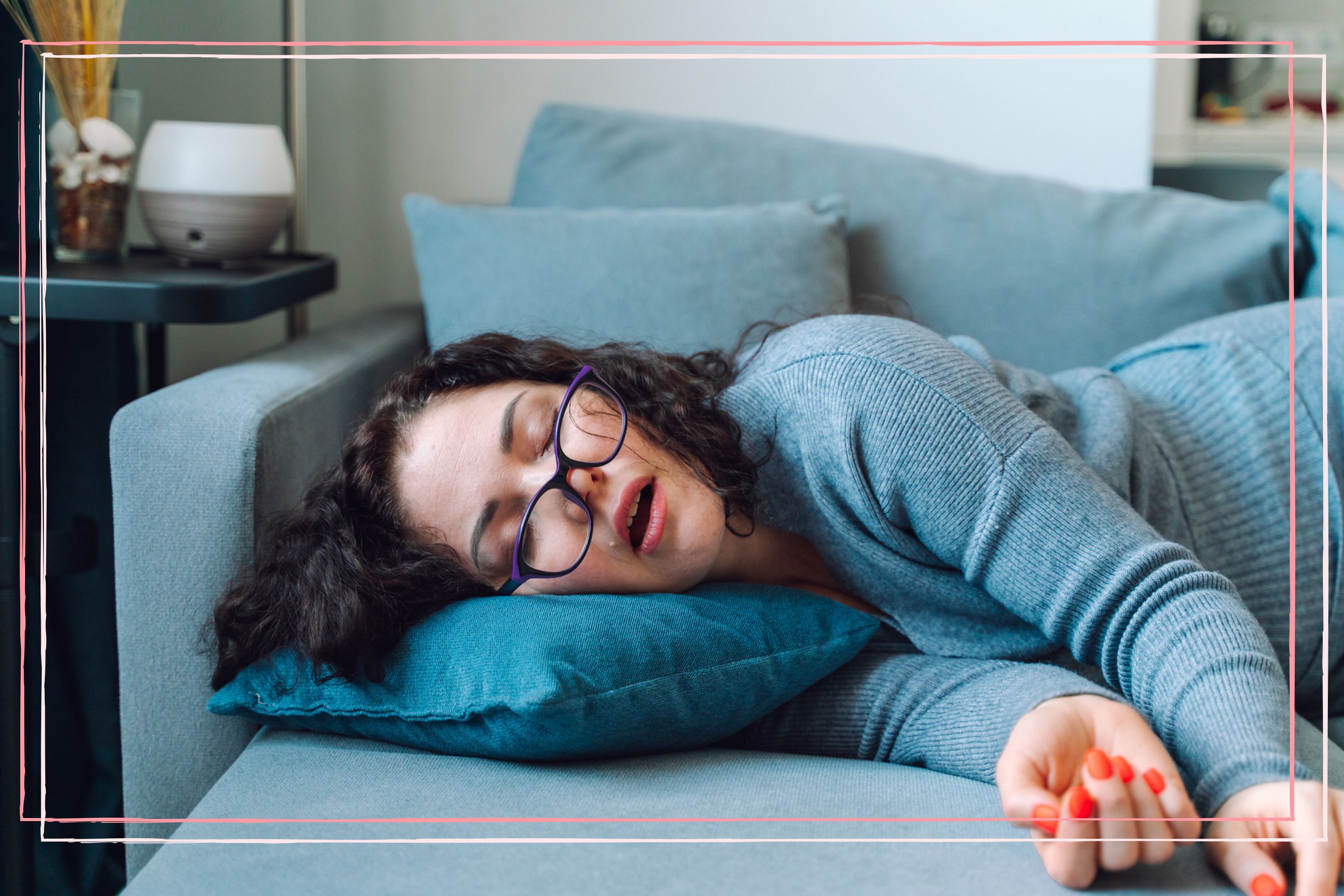What is the Military Sleep Method and how does it work?
Does life feel like a battlefield? The Military Sleep Method may be the solution to your midnight anguish


Sleepless nights happen to the best of us. Perhaps life is hectic and you’re finding it hard to switch off, or the pressure to fit sleep into those precious few hours when both your children are settled is just too much. The Military Sleep Method could help, however intense or sporadic your sleep circumstances.
Of course the question of how to fall asleep fast has many answers, from basic lifestyle tweaks and sleep hygiene tips to more unusual methods, such as headstands and acupressure. The more exhausted we are, the more desperate we become for a solution, and the harder it is to nod off. We often turn to Google... Do sleep affirmations work? What sleeping position is best? Sound familiar? It’s time to try and change that.
When it comes to sleep techniques, you won’t find one with more bulletproof roots than the Military Sleep Method. Sleep coach Tracy Hannigan explains: “It was developed during the Second World War by the United States Navy to help people on the battlefield get the maximum amount of rest and sleep as possible during such a challenging time and in such unusual circumstances.” When it first hit the mainstream in the self-help book Relax and Win: Championship Performance, the author Lloyd Winter claimed the method had a 96% success rate after six weeks of practice. Such potential!

Tracy is a qualified sleep therapist recognised by the Society for Behavioural Sleep Medicine. She works with adults with insomnia and those aiming to optimise their sleep using no-nonsense, evidence-based approaches.
What is the Military Sleep Method?
The Military Sleep Method is a collection of sleep techniques used by military soldiers to fall asleep fast in high pressure situations.
The method combines four different techniques:
- Progressive muscle relaxation
- Body scanning
- Breathwork
- Mental visualisation
“Dubbed 'the two-minute method' it doubtless gained popularity because so many people are looking for a way that helps them fall asleep fast – either because they don't sleep well or they're trying to fit less sleep into their day,” says sleep coach Tracy, who specialises in helping adults overcome insomnia without resorting to medication.
Speed is of the essence in modern-day life, and few of us have an hour or two spare every evening to gradually wind down with a long bath and reading session. This way, you can aspire to jump in bed and join dreamland all in the space of a couple of minutes.
GoodtoKnow Newsletter
Parenting advice, hot topics, best buys and family finance tips delivered straight to your inbox.
A post shared by Mental Health Foundation (@mentalhealthfoundation)
A photo posted by on
How to do the Military Sleep Method
1. Relax your face and begin to breathe deeply
For the first step, become aware of the muscles of the neck, face and head – particularly the jaw. “These are areas where we hold more stress than we realise,” says sleep coach Tracy. “Breathing deeply and slowly can also slow our heart rate and make it easier to fall asleep.” This also helps take our focus away from the external environment, promoting a state of rest, if not sleep.
2. Release any tension in your shoulders and hands
Still awake? We move onto step two, which helps to reduce tension and stress held in the upper body. “This continues the progressive muscle relaxation technique, which is an evidence-based way of systematically reducing tension in the body and aiding physical and mental relaxation,” says Tracy. “While you continue to breathe deeply, imagine your shoulders and arms dropping and getting heavy and relaxing.”
3. Relax your chest, followed by each leg
Now it’s time for step three. Continue to breathe deeply throughout. “Very often when we are stressed, we breathe rapidly,” says Tracy. “Slow breathing is associated with a calm state, so relaxing the chest and promoting slower breathing makes it easier for a more relaxed physical state to predominate.”
Imagine your chest expanding as you breathe in and relaxing as you breathe out. Repeat these slow deep breaths, as you continue the progressive muscle relaxation technique down into your left leg, and then your right leg, allowing them to grow heavier and more relaxed.
4. Clear your mind of any worries
And finally, we reach the final stage. “Our minds like to think – that's what they do. But worries get in the way of sleep and deep rest,” says Tracy. “Notice the worries come to your mind, acknowledge they are just the brain doing what it is doing right now, and then imagine gently sweeping them aside. Alternatively, you could visualise a relaxing scene. If thoughts intrude, simply cast them aside and return to visualising something peaceful.”
Remember the whole process can be completed effectively in two minutes, but take your time. Move on to the next step when it feels natural, rather than rushing to finish.
Does the Military Sleep Method work?
"While the techniques have not been studied together as a unit, many of the elements have an evidence base for promoting rest, relaxation, stress and anxiety management – and therefore sleep," says sleep coach Tracy. But be prepared to practice for a few weeks to see a real improvement.
“Progressive muscle relaxation – also known as PMR – and body scanning types of techniques can help ground people in their bodies and are especially useful for promoting improved sleep quality,’ says Tracy. PMR and body scanning are very similar. The difference is that in a body scan you often ask yourself to notice pain or discomfort and accept it, before moving on, whereas in PMR the focus is on tension release.
There is evidence that body scanning can help increase how long people sleep as well as reduce how quickly they fall asleep. You may also have experienced progressive muscle relaxation at the end of a yoga class – ever fallen asleep during Savasana?
This may be proof enough that it works, but there are several studies to support this, including on patients struggling with sleeplessness due to COVID-19 and cancer. The former study also showed that PMR reduced anxiety levels when performed twice a day for five days.
“Visualisations and mental clearing types of techniques are also helpful for reducing stress and anxiety and in doing so, promoting sleep,” says sleep coach Tracy. Finally, breathwork, which is practised throughout the Military Sleep Method, also induces a natural state of relaxation. It has been shown to lower blood pressure; a comprehensive 2023 review found that slow breathing could be used as an alternative to medication for those with hypertension.
Don’t expect instant results, however. “All of these techniques are skills and require practice,” says Tracy. The more you use them successfully, the quicker you will be able to achieve the desired state of relaxation and sleep.
Think you’re a particularly hard nut to crack? You’re not alone. According to the Cleveland Clinic, 1 in 3 adults worldwide have insomnia symptoms, and about 10% of adults meet the criteria for insomnia disorder.
If this includes you, take Tracy’s advice: “Doing the technique with a gentle, low-key approach – and practising it not for days but for weeks – is key,” she says. “If a person with insomnia is following the Military Sleep Method with a sense of 'desperation' to make sleep happen, that in and of itself will create anxiety and performance-based stress, which can get in the way of the objective.”
A post shared by Cleveland Clinic (@clevelandclinic)
A photo posted by on
Benefits of the Military Sleep Method
- Improved sleep duration and quality
- Wider physical relaxation benefits
- Increased mental discipline
“Knowing this set of techniques teaches us that we can 'cue up' a relaxed state whenever we need it,” explains sleep coach Tracy. We can therefore use the method, or even just parts of it, to induce a state of relaxation at any point during the day; perhaps you’re at the point of overwhelm and need to dial your stress levels down quickly, or you find a rare moment of peace and quiet and want to use it to recharge efficiently.
If you use the Military Sleep Method often, you will also improve your mental discipline – another invaluable skill when it comes to stress management and mental resilience. “Learning to be ok with worrying thoughts and being able to set them aside to be dealt with later are fantastic skills that can be used at home or at work to help manage workloads and stress,” says Tracy.
Want to read more like this? If your newborn is the problem, you may be asking 'When do babies sleep through the night?' Or you could find out which 17 expert-approved foods could improve your sleep and how to sleep in the heat. And do you know how much deep sleep you need? You might be surprised by the answer.
Video of the Week

Jenny Rowe joined Future in January 2022 as Senior Health Writer on Woman&Home, Woman and Woman’s Own magazines. She graduated from Oxford University with a degree in English Literature in 2016. Since then she has worked within the editorial teams at Country & Town House and The Chelsea Magazine Company, alongside writing for The Independent, Breathe and Planet Mindful. She’s a keen cross-country runner and triathlete with a love of the great outdoors and a passion for the world of women's wellness.